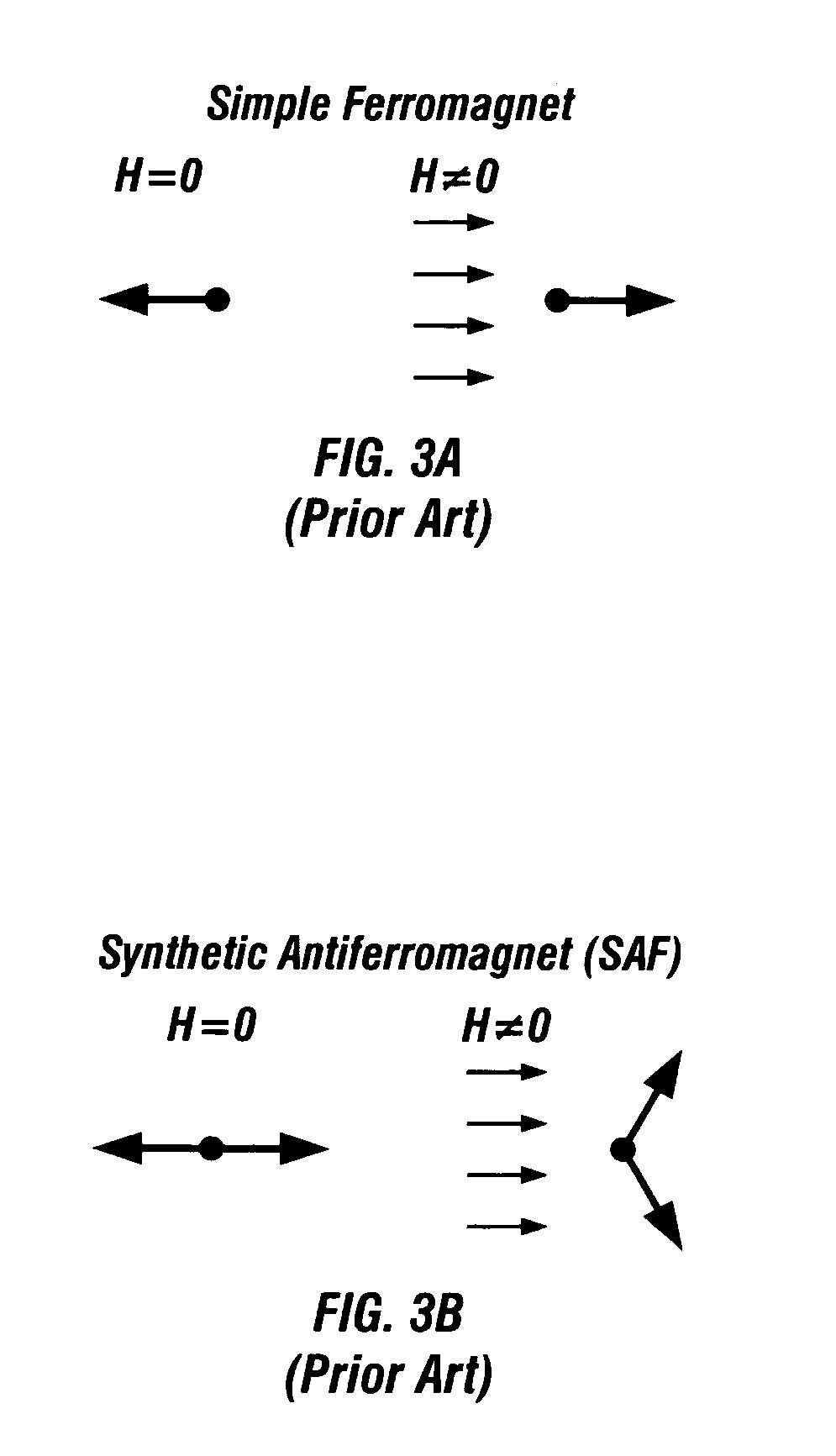Magnetic random access memory with stacked toggle memory cells
a random access and memory cell technology, applied in the field of magnetic random access memory, can solve the problem that selected cells cannot be inadvertently switched
- Summary
- Abstract
- Description
- Claims
- Application Information
AI Technical Summary
Benefits of technology
Problems solved by technology
Method used
Image
Examples
Embodiment Construction
Prior Art
[0024]FIG. 1 is a perspective view of a portion of the prior art MRAM showing a single Savtchenko MTJ memory cell with a SAF free layer whose magnetization direction is switched by toggle writing. The MTJ cell is located in an intersection region between a second write line (WL2) (aligned along the Y axis) and a first write line (WL1) (aligned along the X axis). The write lines are connected to a write circuit that provides the sequence of current pulses to perform the toggle writing. Only one MTJ cell and intersection region is depicted in FIG. 1, but in the MRAM there are a plurality of generally parallel second write lines and a plurality of generally parallel first write lines that are orthogonal to the second write lines and overlap to define a plurality of intersection regions. Each intersection region contains an MTJ cell. Each MTJ cell is electrically connected to a transistor that is formed on the MRAM substrate (not shown). In the embodiment of FIG. 1 each MTJ cel...
PUM
 Login to View More
Login to View More Abstract
Description
Claims
Application Information
 Login to View More
Login to View More - R&D
- Intellectual Property
- Life Sciences
- Materials
- Tech Scout
- Unparalleled Data Quality
- Higher Quality Content
- 60% Fewer Hallucinations
Browse by: Latest US Patents, China's latest patents, Technical Efficacy Thesaurus, Application Domain, Technology Topic, Popular Technical Reports.
© 2025 PatSnap. All rights reserved.Legal|Privacy policy|Modern Slavery Act Transparency Statement|Sitemap|About US| Contact US: help@patsnap.com



